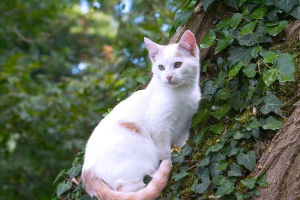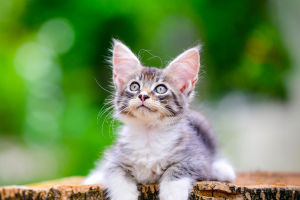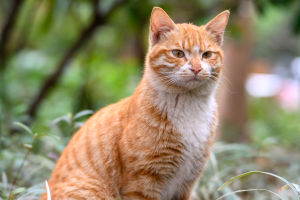Do you know, Lykkers? The Iberian lynx, one of the most elusive and endangered big cats in the world, has honed its hunting skills over centuries of evolution.
Known for its sharp hunting instincts, keen senses, and stealthy behavior, the Iberian lynx’s method of hunting is a fascinating example of precision and efficiency.
This wildcat, native to the Iberian Peninsula, relies heavily on its agility and intelligence to capture its primary prey: the European rabbit. But what exactly makes the Iberian lynx such a skilled hunter?
Stealth and Camouflage
One of the key elements of the Iberian lynx's hunting success is its ability to remain undetected by its prey. With its spotted fur pattern that blends seamlessly into the scrubland and woodland environments of southern Spain and Portugal, the Iberian lynx uses camouflage to its advantage. It typically stalks its prey, carefully moving through underbrush and rocky terrain to minimize its presence.
Their short but powerful limbs allow them to stay low to the ground, maintaining a stealthy posture as they inch closer to their quarry. The lynx’s ability to move with minimal sound and its meticulous approach are key to getting within striking distance without alarming its prey.
Keen Vision and Hearing
Another notable characteristic of the Iberian lynx is its extraordinary senses, which play a vital role in its hunting strategy. The lynx’s vision is highly developed, allowing it to spot movement at great distances, even in low light conditions. This sharp eyesight enables it to track the movements of its prey from a distance, planning its attack with precision.
Additionally, the lynx’s acute sense of hearing is essential for detecting any sounds of potential prey nearby. With its wide, rounded ears capable of rotating in different directions, it can pinpoint even the slightest rustle of a rabbit or bird. This sensory combination ensures that the lynx can detect and track its prey over long distances.
The Ambush Strategy
The Iberian lynx is not a sprinter, but its power lies in its ability to execute calculated ambushes. Rather than chasing down prey across large distances, it relies on its ability to leap out from hidden positions in the underbrush or from behind obstacles. Its hunting strategy involves patience and timing, waiting for the perfect moment to make a move.
Once it has closed the gap, the lynx uses its remarkable agility to pounce. A powerful leap, followed by a quick strike with its strong, retractable claws, secures the prey. In most cases, the lynx kills its prey with a swift bite to the neck or head, effectively neutralizing the rabbit or bird.
Precision and Efficiency in Hunting
The Iberian lynx is a solitary hunter, meaning that it doesn’t rely on group dynamics for prey. This solitary approach forces the lynx to develop unparalleled precision and efficiency. Typically, it will hunt alone during the twilight hours of dawn and dusk, when its prey is most active. The Iberian lynx’s ability to time its hunts and exploit the behavioral patterns of its prey makes it a highly efficient predator.
It is also a selective hunter. While it primarily preys on rabbits, it will occasionally hunt small deer or birds if the opportunity arises. This dietary flexibility showcases the lynx's adaptability and its strategic hunting tactics.
Challenges to Hunting Success
Despite its impressive hunting abilities, the Iberian lynx faces several challenges in the modern world. Habitat loss and dwindling prey populations, particularly European rabbits, have significantly impacted the lynx's ability to find food. Conservation efforts have been focused on increasing rabbit numbers and protecting the lynx's natural habitat.
In recent years, reintroduction programs have helped stabilize the Iberian lynx population. These programs focus on not only protecting the lynx but also ensuring its food supply by encouraging healthy rabbit populations.
The Iberian lynx is a prime example of a predator with finely tuned hunting skills. Through stealth, agility, and acute senses, it has perfected its hunting techniques, making it one of the most skilled predators in the wild. However, with the growing threats posed by environmental changes, conservation efforts are more important than ever.
By protecting both the Iberian lynx and its prey, we can ensure that this incredible species continues to thrive in the wild for generations to come!
NEW SEASON LYNX DOCUMENTARY FROM HUNTING TO SURVIVAL
Video by Wild creatures


